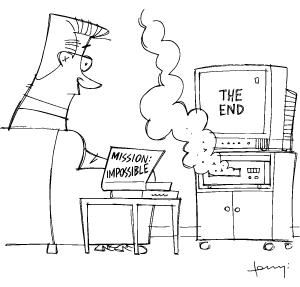2018 July-December
Amplify Your Word Aptitude
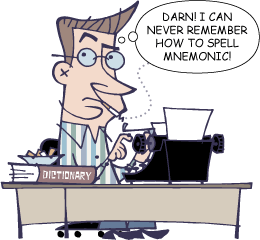
It’s word definition quiz time. Because… why not? As is our system, go to the feature to take the five word test along with the answers.
Mnemonic
- Barely audible
- Possessed by a mnemon
- Of the secret order of mumblers
- Memory aid
- Word with a silent letter
What’s That Supposed to Mean? The Collected Word Definition Quizes
Filed 12/10/18
Endonyms, Surnames and Car Oval Abrs
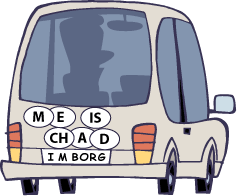
An endonym is the name for a place in the language of the people who live there. Do you know the English version of the European countries listed alphabetically by endonym below? Some are easy, they’re pretty much the same in both languages. As a bonus we give the most common surname in each country. Maybe that helps as a hint. Maybe it’s interesting? Whatever the case, we haven’t bothered with all the little diacritical marks since we’re clueless as to what command-shift-option-control-whatever keyboard commands they would be. It probably wouldn’t help the reader pronounce them anyway. It doesn’t help us at any rate.
Mouseover chart to reveal English versions

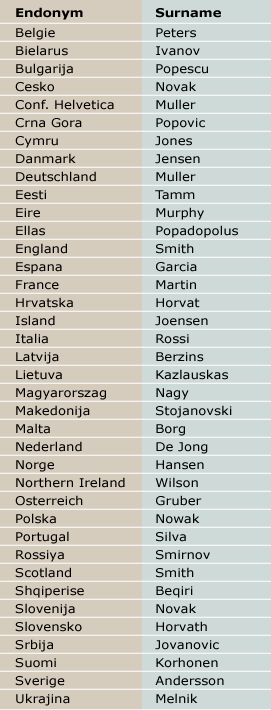
Bonus top picture bit: The driver has personalized both his plate and his oval country stickers. So, what’s his name, where’s he been driving, and where’s he from? Hint, his home country sticker is on his car and he has the most common surname there.
Why it’s Chad Borg, from Malta. The stickers: M Malta, E Spain (Espana), IS Iceland (Island), CH Switzerland (Confoederatio Helvetica), A Austria (Anglicized version), D Germany (Deutschland)
Filed 12/6/18
Add to Your Fauxcabulary



Denihilism: Belief that facts and reality can be nullified if one simply ignores them. It’s a sort-of reverse telekinesis where one can effect things by not thinking about them. (Also see wishteria)
Newrosis: Obsession with getting the newest new thing. Extreme cases can be spotted standing in long lines outside unopened theaters and stores in the wee hours of the night.
Shamnesia: Condition where one cannot remember personal details or incidents on the advice of their attorney.
Wishteria: Fanatical belief in the obviously ridiculous one wishes were true. Often causing an uncontrollable desire to appear on TV shouting meaningless phrases. (Also see denihilism)
Filed under Fauxcabulary 11/28/18
What Was Kellogg’s Original Line of Work?


Some surnames are obviously taken from occupations. Barber, Carpenter, Cook, Hunter, Mason, Smith. Other are not so obvious. Cooper, Fuller, Sherman. What kind of jobs are they? Read on and find out.
Six of One, Half Dozen of Another Surnames that Were Jobs
- Cooper —Barrel maker, from Middle English couper. (Though we personally don’t get what coops have to do with barrels.)
- Fowler —Bird-catcher, fowl hunter. From Old English fugol, “bird.” (But watch out for Parker, meaning park keeper, aka gamekeeper, aka game warden.)
- Kellogg —Butcher. From the Middle Ages meaning “killer of hogs.” (A far cry from maker of corn flakes.)
- Sawyer —Sawer of wood, woodcutter in Middle English. From Old English sagu, “saw.” (Which isn’t pronounced soy, so why do we say the name as Soyer?)
- Spencer —Dispenser of provisions to those who worked at a manor. From Middle English spense “larder, pantry.” (Yet no-one is named Larderer or Pantryer.)
- Wagner —Wagon maker, cartwright. From Middle High German wagener. (Wright means maker or worker. Hence Cartwright is cart maker. The past tense of wright is wrought. So wrought iron is worked iron. Just ask Smith.)
The following half dozen are all from the textile trade.
- Dexter —Dyer in Old English. (Which would make Poindexter someone who dyes poins, whatever they would be.)
- Fuller —Person who softened and cleaned coarse cloth by pounding it, called fulling. Middle English from Latin fullo. (Nothing to do with the brush man, sigh.)
- Sherman —“Shear man,” a sheep-shearer or cutter of cloth. (Yet the name Shearer comes from the German name, Scherer or Scheer. Which means a sheep-shearer or cutter of cloth. So it’s all good.)
- Taylor —From Old French tailleur, from Latin taliare, “to cut.” (Our roundabout way of saying it’s simply tailor, only spelled with a Y.)
- Walker —Person who walked on damp raw cloth to thicken it before fulling, as per above. From Middle English walkere, Old English wealcan, “to move.” (Who’d’ve figured walking was a job?)
- Weaver —Weaver. (Unsurprisingly enough.)
You might have noticed you got three extra name origins in the comments. Just call us generous. Though the name is Colon, which is Anglicized Colón, the Spanish form of the Italian Columbo, from Latin columba, “dove.” Find out where your name came from here:
Filed 11/26/18
When They Stole the Mona Lisa for the Publicity
The Mona Lisa was stolen from the Louvre in 1911 by a criminal gang master-minded by Marques Eduardo de Valfierno in the most sensational art theft of the 20th century. Valfierno never intended to sell or ransom the painting, he had no plans for it other than it go missing. The real scam was to sell six forgeries on the black market to unscrupulous art collectors. Hey, why sell one when you can sell six? A dishonest thief, who’d’ve figured?
Thing was, DaVinci’s masterpiece was actually stolen to generate newspaper headlines. After all, nobody would buy a fake Mona Lisa unless the real one was stolen. That the genuine article might turn up someday didn’t matter, the buyers couldn’t exactly complain to the authorities they had been duped into buying a fake stolen painting.
La Joconde, as the painting was called in France, was left with an Italian accomplice, Vincenzo Perugia, who sat on the hot goods for two years expecting an eventual payoff when it was ransomed back to the Louvre. As this never happened, and unbeknownst to Perugia wasn’t part of the scheme from the git-go, he later tried to “repatriate” La Gioconda, as it was called in Italy, back to his homeland. For a little profit, of course. In the end Perugia was the only member of the gang to do time and became something of an Italian folk hero, as all Italy believes the Mona Lisa was stolen from them by the French to begin with.
Oddly enough, more people went to see the spot where Da Vinci’s masterpiece used to hang in the Salle Carre than to see the painting itself, many leaving flowers as if at a grave or death spot.
Filed 11/12/18
Who Was the First Borg?

We’ve been physically enhancing ourselves for a long time, eh? Besides peg legs and ear trumpets, we’ve had glass eyes and false teeth. Not to mention wigs and toupees. As well as tattoos, piercing, scarification, makeup, and haircuts. Folks have been using chemical enhancements for ages, too. Tobacco, alcohol, peyote, hemp, coffee, chocolate. Then there’s every kind of tool. While not permanently attached, tools sure enhance human abilities over what nature provides. Much better than tattoos, piercing, scarification, makeup, or haircuts.
Filed 11/7/18
There’s No Transcontinental Railroad in America and Never Was
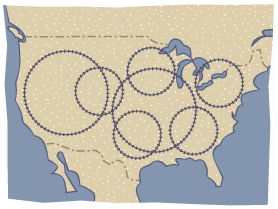
“No transcontinental railroad? Of course there is,” we argue with ourselves. “We’ve seen the photos, Promontory Point, golden spike and all that. Happened 150 years ago. This is not one of those faked moon landing type conspiracy theories, is it?”
“Not a bit,” we reply to ourselves. “By ‘railroad’ we mean ‘railroad company.’ Railroad trackage goes coast to coast, yet no single railroad, not even the biggies, operates coast-to-coast in the U.S. Sure, you can send freight across the country, but it will have to be carried by at least two different railroads.”
To which we respond, “Well, that explains that. But what explains why we are talking to ourselves about it this way?”
“Uhh… On to the trivia.”
After many decades of mergers and acquisitions, there are seven big, long-haul (Class I) railroads operating in the U.S.: Burlington Northern and Santa Fe (BNSF) Canadian National (CN), Canadian Pacific (CP), CSX, Kansas City Southern, Norfolk Southern (NS), and Union Pacific (UP). These roads account for 69% of freight rail mileage and 90% of railroad employees. They be big. Yet not one of them has trackage from coast to coast. At least in America. CN and CP do go coast-to-coast in Canada.
Unlike in “Monopoly” where one player can own every railroad, that ain’t the way it works in the real world. Besides the big seven there are plenty of regional (Class II) and short line (Class III) railroads. All told, about 700 railroads coast to coast, but none coast-to-coast.
“OK. Still, what’s with the boring railroad trivia?”
“Call us nerds, but we simply like railroads. Especially steam locomotives. Just look at them; they’re big, bad, and totally awesome.”
“Nerds.”
Filed 10/29/18
English Do Be Odd
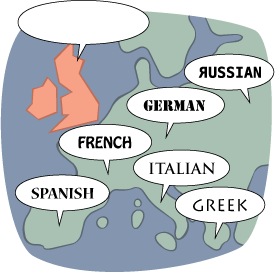
Throughout Europe “Do you speak English?” just won’t do. Nobody but Brit talkers use ‘do’ like that to ask a question. The others make do without ‘do.’ Do you think that’s odd? Actually, it’s English that’s odd. Still, how do you explain how to use ‘do’ that way to people who do not do it? Or rather, “How explain you ‘do’ to people who that way speak not?” That can’t be right. How do they do it? We do not know. Do you? You do? Do tell.
This ‘do’ usage came from the Celts. A snippet from aeon.co:
“Crucially, their languages were quite unlike English. For one thing, the verb came first (came first the verb). But also, they had an odd construction with the verb do: they used it to form a question, to make a sentence negative, and even just as a kind of seasoning before any verb. Do you walk? I do not walk. I do walk. That looks familiar now because the Celts started doing it in their rendition of English…”
Read the whole article: English Is Not Normal
Filed 10/19/18
Trivia Trio

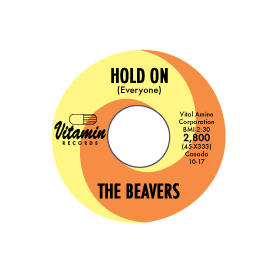
Dam That’s Big: Wood Buffalo Park in Canada contains the world’s biggest known beaver dam, about 2,800 feet wide, over twice the width of Hoover Dam. (Built by the world’s biggest known beaver?)
Rename That Tune: The most popular song on the Billboard charts for the last 60 years is “Hold On.” We should say, the most popular song title, there have been sixteen different songs of that name on the “Hot 100” since 1958. (But still only one “Do Wa Ditty Ditty.” Go figure.)
Know to Need: Back in the day, diseases such as pellagra and rickets were identified as being due to a lack of a substance of some sort. The term coined for such a missing substance was vital amine. Shortened to the now familiar, vitamin. (That’s vie-tamin as in vital, not vit-amin as in victual. Which is confusing unless you know victual is pronounced “vittle.” It’s not just a Beverly Hillbillies thing.)
Filed 10/17/18
The First Columbus Day
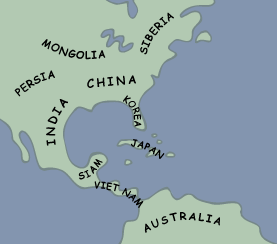

On this date in 1492 Christopher Columbus discovered the New World. Though Columbus didn’t discover it in his own mind, he thought he’d reached some outlying islands of Japan. Believed it to his dying day. He wasn’t the only one confused because other folks at the time thought the people living there were Indians. Indians in Japan? Hey, it was a new world. Well, new to everybody in Europe. That’s why they later named all the bits they took over things like, New Spain, New France, New Amsterdam, New Jersey, Newport News, and like that. Though they called it all North and South America and not North and South New Europe.
Filed 10/12/18
Your Thursday Stolen Joke




“My dad is so cheap that when he dies, he’s going to walk toward the light and turn it off.”
—Comedian, Matin Atrushi
Filed 10/11/18
Frivia Tuesday




Ten En-lightning Bits about Lightning
- Lightning strikes over eight million times on your average day on your average Earth
- Lightning bolts are five times hotter than the sun at around 50,000 degrees Fahrenheit
- About ten percent of lightning strikes occur when it’s not raining
- Lightning strikes the Empire State Building close to 100 times a year
- Lightning hits your typical commercial aircraft in flight once a year, typically
- Lightning and thunderbolts are the same thing, only lightning is a plural that doesn’t end in S (You know, like deer or fish)
- Five out of six lightning trivia bits start with the word ‘lightning’
- Make that five out of seven
- Go back to five out of six since 7-9 really don’t contain any lightning trivia
- No, make that four out of five since number six is actually word trivia and not truly about lightning per se
Filed 10/9/18
“Music Has Charms to Soothe the Savage Breast”


This famous phrase in the headline is commonly misquoted as ‘the savage beast.’ As a matter of fact, there are twice as many citations with ‘the savage beast’ as for ‘the savage breast.’ The phrase was coined by William Congreve, in The Mourning Bride, 1697:
Musick has Charms to sooth a savage Breast, To soften Rocks, or bend a knotted Oak.
Which means even if you get the breast-not-beast part right, it’s ‘a’ not ‘the’ savage breast. All the same, is it true? We can’t vouch for the softer rocks and bendy oak bits, but the soothing part works, no matter how you spell music(k) and sooth(e) or if you capitalize the nouns like a German.
Top Ten Benefits of Good Music
- Upbeat, happy music helps you complete work more quickly
- Music can help decrease levels of the stress hormone cortisol (There’s your soothing the savage breast)
- Folks are more creative listening to happy, upbeat music
- Your favorite music triggers dopamine release, the “feel good” hormone also triggered by chocolate and cocaine (Maybe music really is addictive)
- Lullabies are not just for babies; soft pleasant music really helps you nod off and sleep soundly
- Don’t feed or starve a cold, (who remembers which it is) play music; helping promote antibody production
- Listening to music you like increases blood flow improving cardiovascular health
- Music makes time fly, reduces the boredom of waiting (That would be music, not Muzak)
- Music lessens pain (There’s more soothing the savage breast)
- It just plain sounds better than the background hum and drone of modern life (We made that up, but it’s true)
It almost goes without saying all this only works with music you like. And played at a medium volume. Odious music played loud enough to rattle the windows doesn’t soothe. It might even turn you into a savage beast.
Also see: What the Music You Listen to Says about You
Filed 10/1/18
Radioactive Flyer
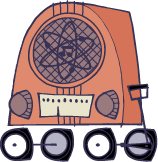


And now, Thursday frivia complete with pointless animation:
The background radiation level on a plane flying at 38,000 feet is over seven times the level at Chernobyl. (Don’t tell the EPA or they’ll mandate planes be made of lead. And we all know how well lead ballons go over.) Thing is, there are dozens of populated places on Earth, major cities, which have natural radiations levels higher than, even double, the level at Chernobyl. These spots are not rife with birth defects, riddled with cancer patients, nor teeming with animal freaks. Nor are folks there becoming zombified or turning into superheroes. Ditto for comercial airline flight crews.
Now then, what about that headline? Remember the Radio Flyer? A kid’s little red wagon. Strange name that. There’s nothing electronic about it and wagons don’t exactly fly, do they? Who comes up with these things? Reminds us of Grape-Nuts cereal. Grapes don’t produce nuts, they have pits. But who would buy Grape-Pits? Still, there are no grapes and no nuts in Grape-Nuts. And no radio in a Radio Flyer. Talk about bait and switch.
Filed 9/27/18
Reason Magazine Snippet Number Whatever
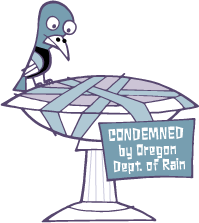
Jon Carey says the pond on his 10-acre home near Butte Falls, Oregon, is the best part of the property that he and his wife bought two and a half years ago. The pond has been there for 40 years. But now the Jackson County watermaster says it is illegal. State law gives the county rights to all rainfall, and the Careys are not authorized to collect it.
Lawmakers are still debating whether counties may charge residents for rain by the inch or by the gallon.
Filed 9/14/18
Why Do Hamsters Run on Wheels?




It’s not to get to the other side. They do it because it’s there. Like a cat chasing a string, they simply can’t resist. So, are they just stir crazy being cooped up in a cage and desperate for exercise or what? Well, they put rodent wheels in fields and wild mice ran on them, too. Guess rodents all over just go for that runner’s high.
How long will hamsters run getting nowhere? They’ve been recorded as commonly going the equivalent of five and a half miles in a night. Now, we didn’t sit around counting wheel revolutions all night long, some researches measured it with a hamsterometer or something. They also recorded rats running 27 miles, mice going 19 miles, and gerbils clocking in at five miles.
You just knew sooner or later we’d add words to go with our oft repeated hamster wheel animation. Rendering our pointless animation a little less pointless. Though still trivial. In fact, here’s a bit of trivia to round things out: A hamster in a running wheel hooked up to a tiny generator can generate up to 500 milliwatts of electric power, enough to illuminate small LED lamps. Though why a hamster would need LED lighting isn’t clear.
One thing we can’t answer, how do the little beasties go at breakneck speed without, you know, breaking their necks? We mean, those rodent wheels are just a series of bars across two hoops, not a solid path. How do they run on such a thing without tripping and stumbling? ’Tis a mystery to us.
Filed 9/11/18
Say What You See
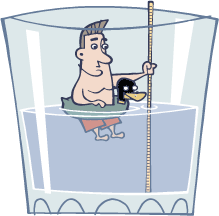
The old gag updated and expanded for entertainment purposes only. Your results may vary. Batteries not included. Do not eat toner.
- Optimist: The glass is half full.
- Pessimist: The glass is half empty.
- Realist: The glass is half full of air and half full of water.
- Conservative: Half of the glass is completely full.
- Leftist: Half of the glass is totally empty.
- Communist: Liquidate half of the glass and it will be full.
- Anarchist: Free the water, smash the glass.
- SJW: Homophobic, sexist racists have expropriated half the water and must be banned from drinking.
- Green: Oh-mi-god! Half the water has evaporated because of global warming!
- Cranky old man: The glass is dirty.
- Engineer: Just drink it or go get more water from the faucet.
Filed 9/6/18
Believing Is Seeing
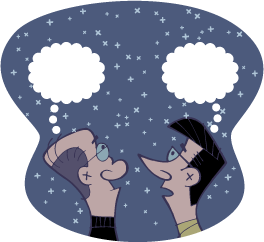
“We don’t believe what we see, we see what we want to believe.”
–Unknown
Yes, we did this one before, but not with the fancy-schmacy animation. Are you beginning to spot a trend here?
Filed 8/21/18
